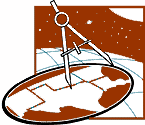|

Resources and Opportunities
One way to find out more about design education in your state is to talk to the
state education agency person in charge of technology education. These contacts
can tell you about statewide initiatives, links with national efforts in
technology education, and what might be going on in your local area.
Hervey R. Galloway
Arkansas Department of Education
Three Capitol Mall
Little Rock, AR 72201-1083
1-501-682-1271
Jerry O'Shee
Louisiana State Department of Education
PO Box 94064/Room 300
Baton Rouge, LA 70804-9064
1-504-342-1499
Karen Christopherson
New Mexico Department of Education
300 Don Gaspar
Santa Fe, NM 87501-2786
1-505-827-6662
Lynn Hawkins
Technology Education
1500 West Seventh Ave.
Stillwater, OK 74074-4364
1-405-743-5478
Richard Grimsley
Texas Education Agency
1701 N. Congress Ave.
Austin, TX 78701-1494
1-512-463-9688
Photogate Sensor
A Photogate Sensor can be connected to a computer or a CBL (computer-based
laboratory). The sensor system consists of an infrared light-emitting diode (LED)
and an infrared light sensor. When an object passes between the light source and
the sensor, the sensor sends a signal to the computer. For the power boat
activity on page 6, set one photogate at the starting point and a second
photogate at the finish point. The computer will record the elapsed time and
display it on the monitor. The boats must be equipped with a flag that will block
the beam of light when the boat passes through the photogate. Photogates are
available in kits or ready-made and range in price from a $23 kit to $75
assembled. Versions are adaptable to IBM, Apple II, and Macintosh computers;
additional interface software will be needed.
Available from:
Vernier Software
2920 S.W. 89th Street
Portland, OR 97225
1-503-297-5317
Technology for All Americans
The National Science Foundation (NSF) and the National Aeronautics
and Space Administra-tion (NASA) have funded the Technology for
All Americans (TAA) project to develop national standards for
K - 12 education. Presently in Phase I, TAA is grappling with questions
concerning the long-term vision for technology education and a clear
definition of the intellectual domain it encompasses. Phase II will
develop curriculum content standards for grades K - 4, 5 - 8, and
9 - 12. All aspects of technology will be included in the standards
as well as relationships with such allied disciplines as science,
mathematics, and engineering. For more information:
Technology for All Americans 1997 South Main Street
Suite 701
Blacksburg, VA 24061-0353
1-540-953-0203
Their Web address is http://www.iteawww.org/TAA/TAA.html
International Technology Education Association
The International Technology Education Association works on behalf of technology
teachers, supervisors, administrators, and university personnel. Its purpose is
to enhance technology education through experiences in schools, grades K - 12.
ITEA publishes The Technology Teacher and the Journal of Technical Education, as
well as a variety of other publications and videos providing teaching directions,
instructional ideas, and networking opportunities. For further information,
contact:
ITEA's national office
1914 Association Drive
Reston, VA 22091
or check out their Web page at
http://www.tmn.com/Organizations/Iris/ITEA.html
1-703-860-2100
Ties: The Magazine of Design and Technology Education
For teachers of grades 6 - 12, Ties: The Magazine of Design and
Technology Education offers a look at technology and design
as a field of study in U.S. schools. Ties is a nonprofit publication
of Trenton State College, which offers an undergraduate degree program
in technology education. The magazine is published six times a year
and is free to teachers. It generally presents feature articles
by teachers about their experiences. For more information write:
Ties Magazine
103 Armstrong Hall
Trenton State College
Hillwood Lakes CN 4700
Trenton, NJ 08650-4700
1-609-771-3333.
Or check out their Web page at http://www.tiesmagazine.org/
The Science Source
For a selection of kits, instructional activities, books, and tools that support
design technology in the classroom, contact The Science Source and request a
catalog of their materials. The library references available from this
distributor include excellent publications from Great Britain that may be
difficult to track down at your local bookstore. The Science Source also
distributes the LINX[TM] System, a set of building/construction materials and the
Collins Primary Technology series.
Address:
The Science Source
PO Box 727
Waldoboro, ME 04572
1-800-299-5469
Classroom Compass Back Issues:
Issue 2.3 Contents:
Previous:
Next
|